On the state of research funding
The political dynamics of research funding an increasingly important lens in understanding the influence of research funding on research itself. How to make sense of this?

I recently attended a workshop on research funding and what can be done to improve public funding of research. In this blog post, I share why I consider the political dynamics of research funding an increasingly important lens in understanding the influence of research funding on research itself.
In its most basic form, research funding is a tool used for a variety of purposes. It can be a macro economic tool, used to stimulate economic development. It can be a tool to gain a competitive edge over another business or country. It can be a tool used to gain autonomy, or for states even a form of sovereignty. In many liberalized countries, public research funding is justified as providing a high return on investment – the multiplier is estimated to be around 10, which means that for every €1 invested in research, the Gross Domestic Product (GDP) grows by €10.
The purpose research funding serves, changes as public research funding shrinks relative to private research funding. Private research funding is approximately two times as large as public funding in Germany (2021), three times as large in both Austria and the Netherlands (2021 and 2022, resp.). Moreover, general expenditure across the OECD countries is rising faster for private funding than for public funding – this indicates public research funding is shrinking in importance. Seeing more private interests represented means there is less governance, oversight, and ethics in what gets researched and how. Other things being equal, I would say that privatization of funding risks the deregulation of research.
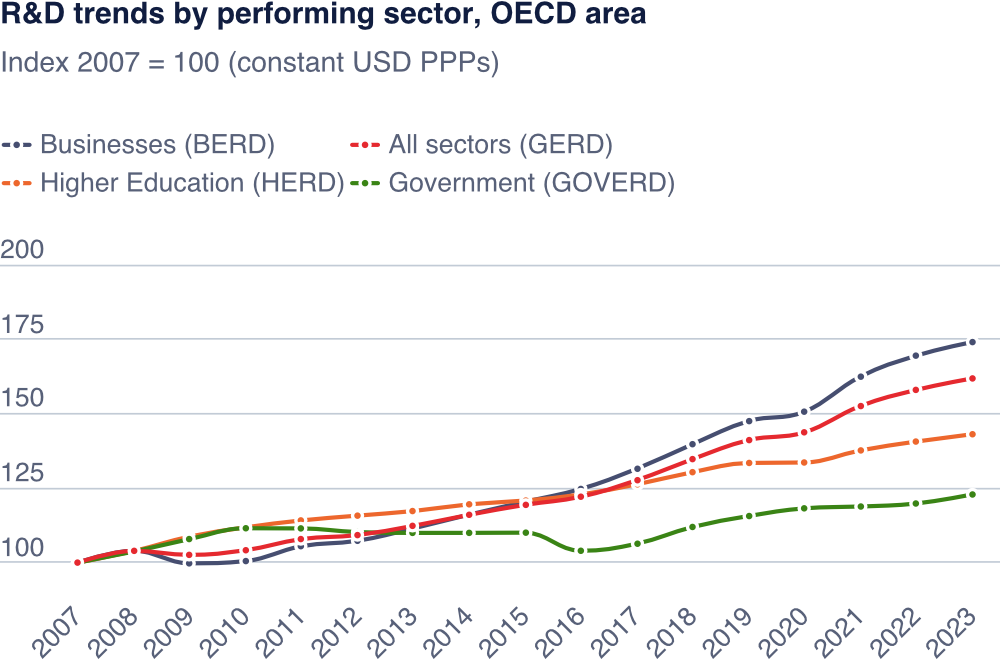
There is also indication that these public and private funding are largely isolated. In other words, private research funding goes to private entities (private-private); public funding to public entities (public-public). Upon my initial search, I did not find structured data comparing this across countries over the years. However, snapshots from the Netherlands, Germany, and Austria indicate private funding to public entities is around €100-150 million per year (private-public). Public funding to private entities is similar in those snapshots (public-private), but does not include indirect public research funding of private entities. Indirect public-private funding through tax subsidies in the form of tax breaks have slowly risen over the past decade in the OECD countries.
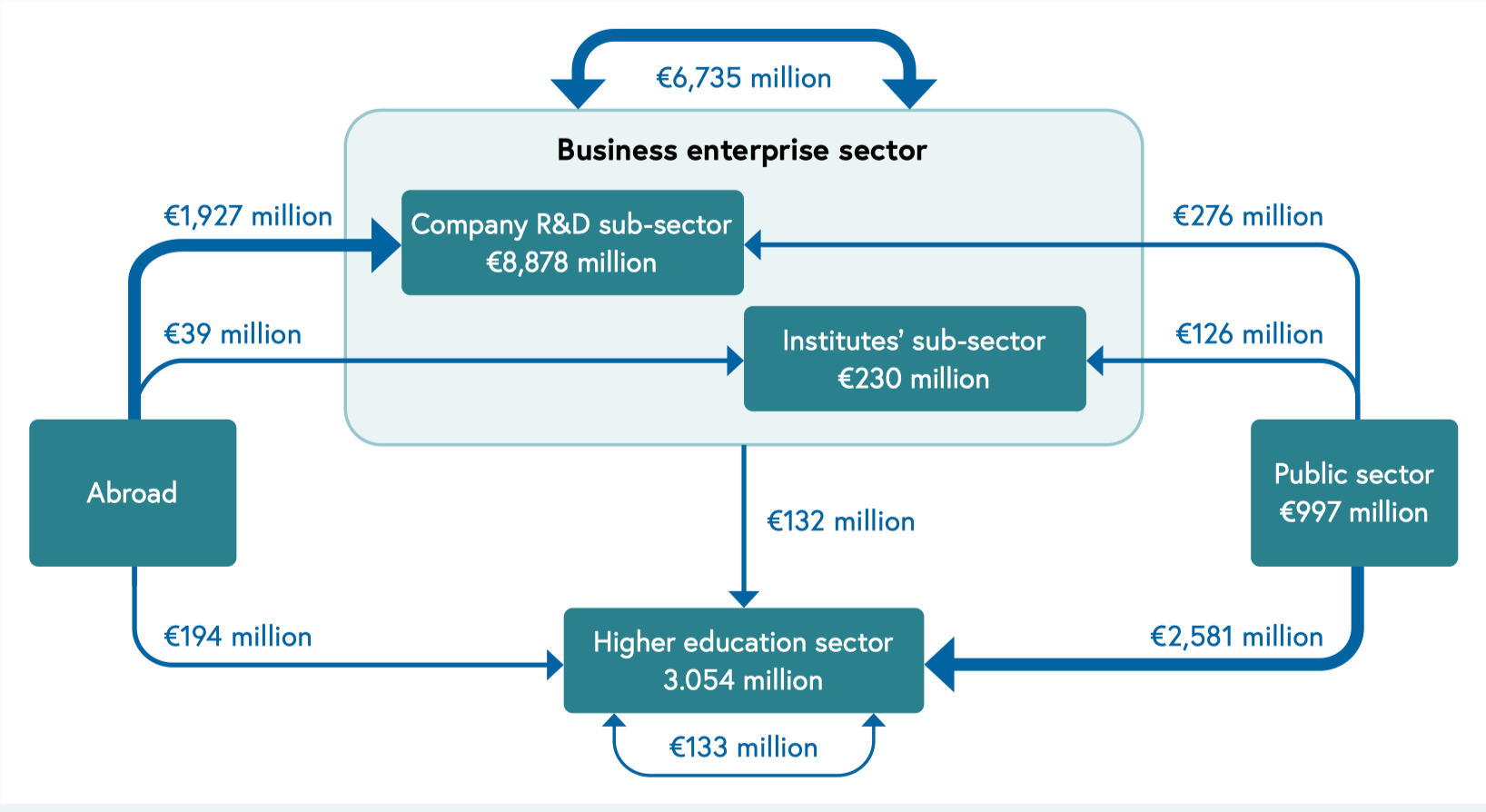
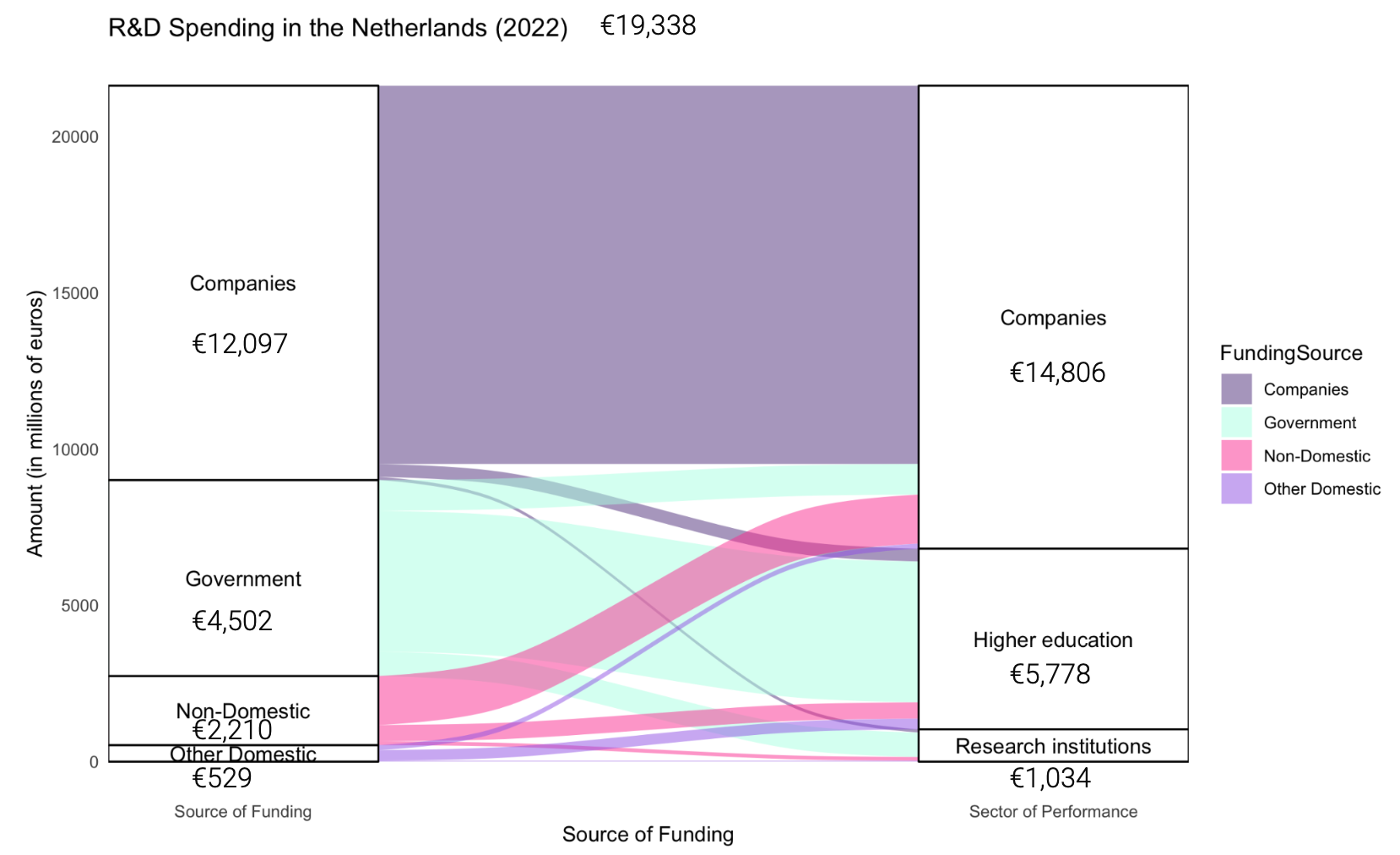
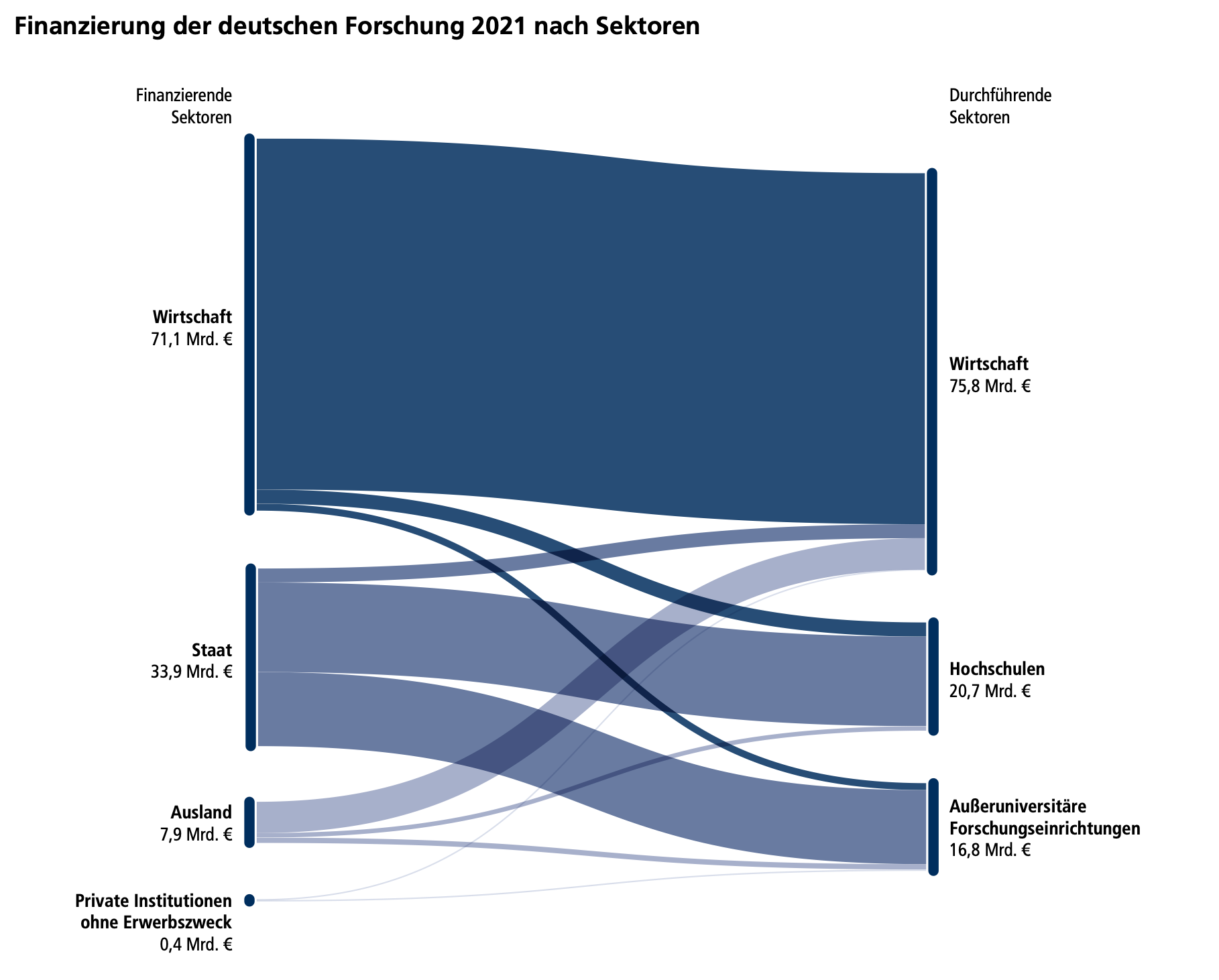
From left to right: (1) Austrian research funding 2021. See also the Austrian Research and Technology Report, page 40 – (2) Dutch R&D Spending, 2022. Data by Rathenau Institute. Visualization by Rima-Maria Rahal – (3) German research funding split per sector (2021). Retrieved from DFG Förderatlas (page 32).
Within public research funding, the purposes are continuously evolving. Public research funding is decidedly political, even if the final decisions of whether you or I get funding are not decided in the political arena. How big is the budget? What are the funding programs? How much is allocated to the humanities, to medical sciences, and other fields? Why? These are all political dimensions of public research funding.
The political decisions on that front seemed relatively predictable for a while. In my direct experience and understanding of the Dutch, German, and US funding landscape, people agreed to a sufficient degree on the importance of funding research in principle. The Zeitgeist promoted cost-cutting measures, argued against funding domains that are perceived as not economically viable (for example, due to small number of enrollments), and promoted a market of ideas. I do not think those are the right considerations to have, but they were fairly predictable nonetheless.
Those political factors are changing and the outcomes of public funding are becoming more volatile. Not only are the decisions of what to fund quickly changing, existing public funding can become leverage to hold power over researchers. Specific occurrences include grants illegally being rescinded in the USA and the former German science minister ordering a probe to rescind funds for defending protest rights of students. Elsewhere, more wholesale cuts to funding are drastic reductions to public research funding such as in the Netherlands and the USA. In addition, geopolitical changes can cause certain partnerships or research alliances to no longer be considered legal or moral, as is shown by universities cutting ties with Israeli institutions. And this is scratching the surface of what's happening across the world.
One rapidly changing political factor that will influence research funding is national defense and the related defense spending. Public funding shrunk relative to private research funding, but in all likelihood we are heading for a huge influx of public research funds through defense spending. NATO members recently committed to spending 5% of GDP on defense, up from 2%, and explicitly say:
Research and development (R&D) costs are included in defence expenditure.
An influx of defense spending will change the balance in research funding and bring with it a range of issues. I wonder what more defense spending in research will do to the purpose of public research funding? Is it to create more dual use research, which can be used for the proliferation of death in our time? Is it to weaponize the legitimacy of knowledge institutions to legitimize a political agenda? These are not unreasonable questions. Defense based public funding is still the smallest contributor at the moment, but that can change quickly in the next five years. We do not need to wait to start dissecting the effects of increased defense spending.
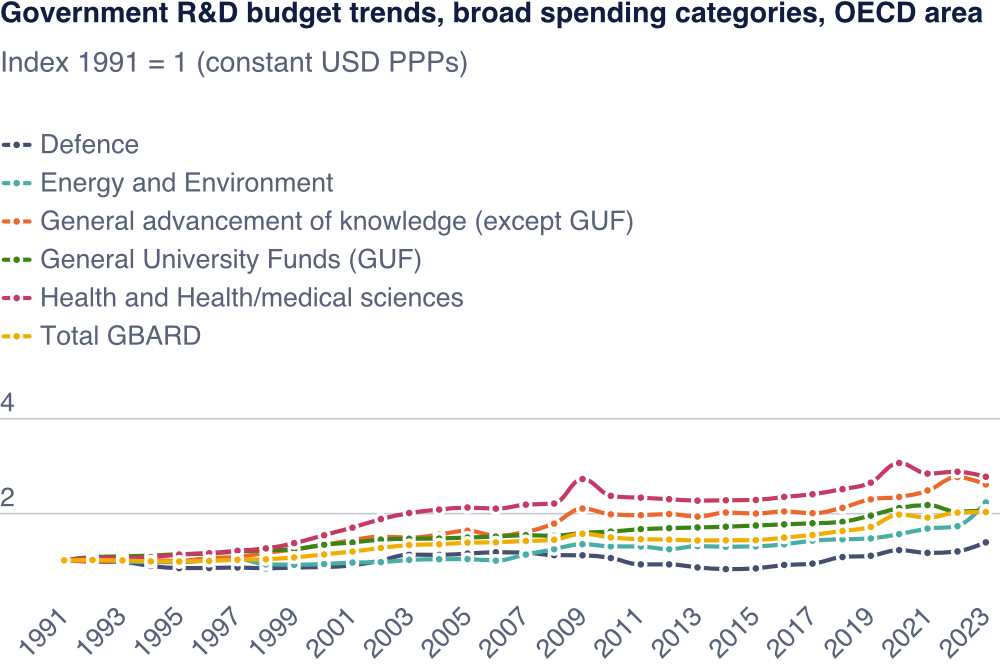
For example, Israel has the highest R&D spend as percentage of GDP in the world (6.3% in 2023); there is ample evidence that public research institutions serve to legitimize the work done in Gaza and the West Bank. That correlation alone raises the question of how research funded by defense funds creates a conflict to sincerely evaluate the defense purposes. How can we expect researchers funded by defense funds to sincerely evaluate the scholasticide in Palestine? Downstream consequences of research funding are a reality we have to face head on.
Finally, all I share here does not directly influence whether funding goes to you or me. It only does so indirectly. The direct funding decisions can still be optimized in many ways by funders, and we know a lot. We need to include scoring rubrics to reduce biases, and ensure they are in the right order to prevent biases. We need to recognize that lotteries can be effective to manage capacity in a responsible manner. My point in this blog, however, is that we need to focus on how our larger political context is shaping our work, even if we as researchers too long shy away from all this in name of supposed "objectivity."
Avoiding the political dynamics in research funding (and beyond) will lead to us, as researchers, being instrumentalized in ways that I object to. I hope you object with me when the time comes.



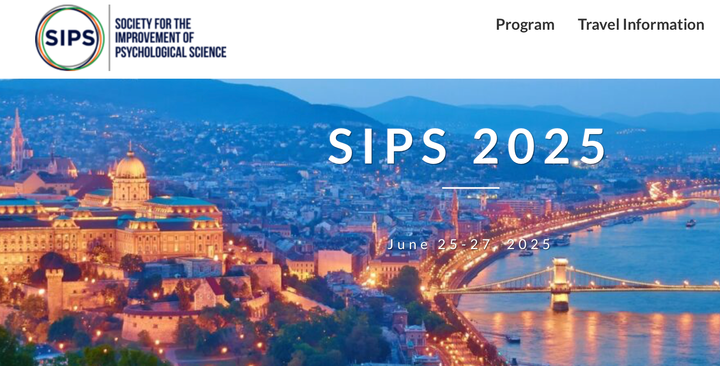
Comments ()